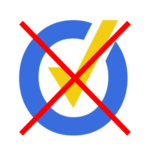Zebra Fact Check had reason in July to submit a correction to Snopes.com, again “verified” as a signatory of the International Fact-Checking Network’s statement of principles.
We found the process needlessly difficult. In fact, we referred to the IFCN’s most recent assessment of Snopes, by Margot Susca, to figure out how to submit our correction request.
Before resorting to reliance on the IFCN assessment, we simply looked for something on the Snopes menu that looked like a place to submit corrections. At Zebra Fact Check, we have a tab that reads “Corrections.” But not everybody does things our way.

We thought “contact us” looked like the route to choose. But that page contained no mention of submitting corrections. Instead, it specifically mentioned sending “tips, links to articles, social media posts, or images, please provide as much detail as possible, including when and where you first came across the item(s) in question.”
After that we cheated by peeking at Susca’s assessment. Susca wrote Snopes “has a clear corrections policy found on its Transparency page here https://www.snopes.com/transparency/.”
How did Susca know to look there? Snopes told her. The IFCN application encourages the applicant to provide a link to its corrections page. IFCN assessors don’t necessarily investigate whether the page is easy to find.
Snopes’ “Transparency” page isn’t found via the top menu. It’s found via a different menu on the footer:

The “About Us” menu item has “Transparency” as the first of four items under “Our Process.” Clicking on “Transparency” leads to the “Corrections Policy” as the last of four items.
It’s quite short, and contains considerable ambiguity where it leaves judgment to Snopes’ editors. But here’s the key line, in the first of three paragraphs, for our purposes: “Readers can submit potential corrections through the Contact form; those submissions will be routed to an editor for evaluation and action.”
In our view, putting a version of that line on the “Contact” page itself makes good sense. Certainly it makes the function of the “Contact” page more transparent for users lacking the patience to search out the “Transparency” page in hopes of figuring out how to submit a correction.
As for Susca and the IFCN, Snopes was found compliant with the IFCN requirement: “6.1 The applicant has a corrections or complaints policy that is easily visible and accessible on the organization’s website or frequently referenced in broadcasts.“
We would not judge the complaints policy at Snopes “easily visible and accessible.” It’s visible if one can find it, certainly, but the trail should be easy to follow. Put it right there on the “Contact” page and it’s easily accessible. There’s no good reason not to make that change.
Update July 19, 2023
We belatedly noticed another means of finding Snopes’ instructions for filing a correction request. The footer menu also has a FAQ that addresses the question. That avenue has one less layer of obscurement than the one we critiqued above.
Still, Snopes would improve its website by including on its contact page the means of contacting Snopes for a correction request.


